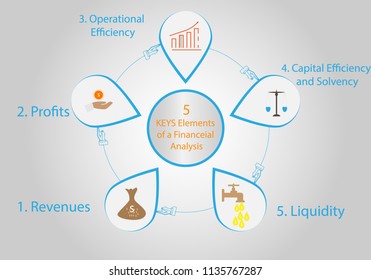Unleash Your Financial Potential: Mastering the 5 Key Elements of Stock Options
Introduction
In this auspicious occasion, we are delighted to delve into the intriguing topic related to Unleash Your Financial Potential: Mastering the 5 Key Elements of Stock Options. Let’s weave interesting information and offer fresh perspectives to the readers.
Unleash Your Financial Potential: Mastering the 5 Key Elements of Stock Options

The world of finance can be intimidating, with jargon flying around like a financial hurricane. One such term that often sparks confusion is "stock options." While they might sound complex, understanding stock options can be the key to unlocking significant financial potential.
This article will demystify the 5 key elements of stock options, providing you with a clear understanding of how they work and how they can be used to your advantage.
What are Stock Options?
Stock options are a type of financial instrument that grants the holder the right, but not the obligation, to buy or sell a specific number of shares of a company’s stock at a predetermined price (the strike price) within a specific period (the expiration date).
Think of it like a ticket to a concert. You buy the ticket (the option) and it gives you the right to attend the concert (buy the stock) at a set price (the strike price) before the ticket expires (the expiration date). You don’t have to attend the concert if you don’t want to, but you have the option to do so.
Types of Stock Options:
There are two main types of stock options:
- Call Options: Give the holder the right to buy shares of stock at the strike price. Imagine you believe the price of a stock will go up. Buying a call option allows you to buy the stock at a lower price than the market price if it does rise, potentially making a profit.
- Put Options: Give the holder the right to sell shares of stock at the strike price. Imagine you believe the price of a stock will go down. Buying a put option allows you to sell the stock at a higher price than the market price if it does fall, potentially making a profit.

5 Key Elements of Stock Options:
- Strike Price: The price at which you can buy or sell the underlying stock. This is set when the option is purchased.
- Expiration Date: The date after which the option expires and is no longer valid.
- Premium: The price you pay to buy the option. This is the cost of the right to buy or sell the stock at the strike price.
- Underlying Stock: The stock that the option is based on. This is the stock you have the right to buy or sell.
- Option Type: Whether the option is a call (right to buy) or a put (right to sell).

Understanding the Mechanics:

Let’s break down how stock options work with a simple example:
Imagine you buy a call option for 100 shares of Company X at a strike price of $50, with an expiration date of 3 months. You pay a premium of $5 per share.
- Scenario 1: The stock price goes up to $60. You can exercise your option and buy the 100 shares at $50 each, then immediately sell them in the market for $60 each, making a profit of $10 per share, or $1,000 in total.
- Scenario 2: The stock price stays at $50. You can choose not to exercise your option. You lose the premium you paid ($500), but you avoid any further losses.
- Scenario 3: The stock price goes down to $40. You would likely not exercise your option, as you can buy the shares for $40 on the market. You lose the premium you paid ($500).
Why Use Stock Options?
Stock options offer several advantages over simply buying or selling shares outright:
- Leverage: Options allow you to control a large number of shares with a relatively small investment. This can amplify both your potential profits and losses.
- Limited Risk: With options, your maximum loss is limited to the premium you paid.
- Flexibility: You have the flexibility to choose whether or not to exercise your option, depending on the movement of the underlying stock.
Risks Associated with Stock Options:
While options can be powerful tools, they also come with significant risks:
- Time Decay: Options lose value as they approach their expiration date. This is known as time decay.
- Volatility: Options are highly sensitive to volatility in the underlying stock.
- Complexity: Options are complex financial instruments that require a thorough understanding of their mechanics.
Important Considerations:
- Knowledge is Key: Before venturing into the world of stock options, it’s crucial to educate yourself on the intricacies of options trading.
- Risk Management: Always practice sound risk management principles, such as diversifying your portfolio and setting stop-loss orders.
- Professional Advice: If you’re unsure about stock options, consider seeking advice from a qualified financial advisor.
Conclusion:
Stock options can be a valuable tool for investors seeking to leverage their investments, manage risk, and potentially increase their returns. By understanding the key elements of stock options and practicing sound risk management, you can unleash your financial potential and navigate the world of options trading with confidence.
Remember, knowledge is power, and the more you understand about stock options, the better equipped you will be to make informed decisions and maximize your financial success.

Closure
Thus, we hope this article has provided valuable insights into Unleash Your Financial Potential: Mastering the 5 Key Elements of Stock Options. We appreciate your attention to our article. See you in our next article!
google.com





